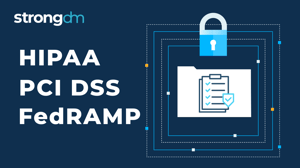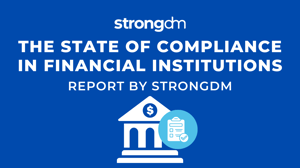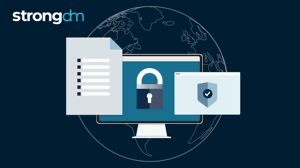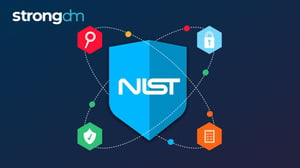ISO 27001 vs. SOC 2: Understanding the Difference
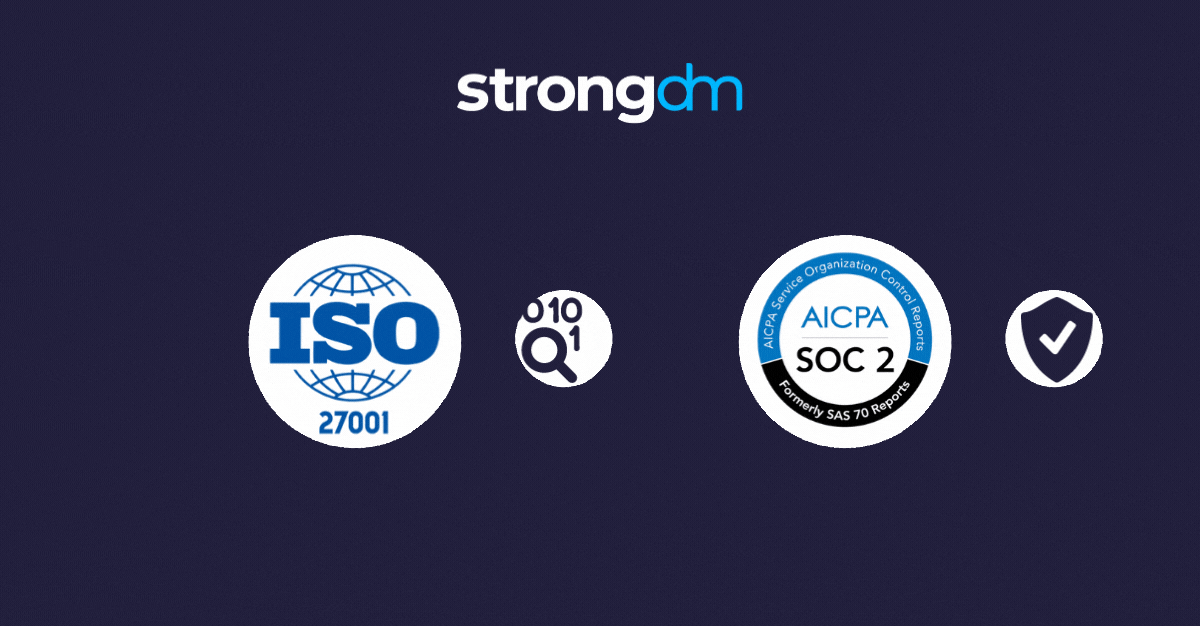

Written by
John MartinezLast updated on:
October 17, 2025Reading time:
Contents
Built for Security. Loved by Devs.
- Free Trial — No Credit Card Needed
- Full Access to All Features
- Trusted by the Fortune 100, early startups, and everyone in between
Summary: SOC 2 and ISO 27001 both provide companies with strategic frameworks and standards to measure their security controls and systems against. But what’s the difference between SOC 2 vs. ISO 27001? In this article, we’ll provide an ISO 27001 and SOC 2 comparison, including what they are, what they have in common, which one is right for you, and how you can use these certifications to improve your overall cybersecurity posture.
What are ISO 27001 and SOC 2?
What is ISO 27001?
ISO 27001, also known as ISO/IEC 27001, is a set of standards and requirements for an information security management system (ISMS). These standards represent best practices for information security management, enabling organizations that apply them to ensure security across a number of assets, including:
- financial information
- employee data
- intellectual property
- third-party data
ISO 27001 focuses on ensuring three key aspects of data protection:
- Availability – Information is accessible to authorized users.
- Confidentiality – Only authorized users have access to the data.
- Integrity – Only authorized users can edit the information.
The framework was published jointly by the International Electrotechnical Commission and the International Organization for Standardization (ISO)—an independent, non-governmental organization that develops international standards covering technology and manufacturing.
What is SOC 2?
SOC 2, or Service Organization Control 2, outlines organizational controls for five main service principles created by the American Institute of Certified Public Accountants (AICPA): security, availability, processing integrity, confidentiality, and privacy of customer data.
Together, these controls provide a framework for safeguarding data. Organizations use SOC 2 to measure their current security posture and identify opportunities to improve cybersecurity through the best practices outlined by the SOC 2 report.
What is the Difference Between ISO 27001 and SOC 2?
There are several key differences between ISO 27001 vs. SOC 2, but the main difference is in scope. The goal of ISO 27001 is to provide a framework for how organizations should manage their data and prove they have an entire working ISMS in place. In contrast, SOC 2 focuses more narrowly on proving that an organization has implemented essential data security controls.
In other words, ISO 27001 is all about developing and maintaining an ISMS, while SOC 2 simply audits the current security controls in place. As a result, ISO 27001 requires more extensive compliance measures in order to achieve certification.
Additionally, ISO 27001 is a formal international security certification standard, and SOC 2 is a set of audit reports performed by an independent Certified Public Accountant (CPA) or accountancy organization. Unlike SOC 2, ISO 27001 is a prescriptive certification that uses universal standards for every industry and geographic location. But SOC 2 is more flexible and customizable to the specific organization based on individual industry standards and needs.
SOC 2
SOC 2 offers flexibility for organizations looking to upgrade their security compliance. Out of the five Trust Services Criteria, Security is the only mandatory category. This means organizations can decide which criteria to focus on (in addition to Security) to build out their program and prepare for the audit.
There are also two SOC 2 audits: Type 1 and Type 2.
ISO 27001 vs. SOC 2 Type 1: SOC 2 Type 1 evaluates an organization’s security program at a single point in time—providing a snapshot view into your current security posture.
ISO 27001 vs. SOC 2 Type 2: SOC 2 Type 2 evaluates an organization's security program over a longer-term—usually six to 12 months. This audit is a valuable report because it provides a more comprehensive look at your security landscape.
The result of either SOC 2 audit is an attestation report confirming an organization meets SOC 2 standards.
Note: SOC 2 is not a certification.
ISO 27001
In contrast, ISO 27001 reviews the whole design and operating effectiveness of an organization’s ISMS at a point in time. This involves an intensive audit of 7 main requirements with 114 suggested controls. The 7 requirement categories are outlined under Clauses 4 through 10 of the ISO standards:
- Context of the organization
- Leadership
- Planning
- Support
- Operation
- Performance Evaluation
- Improvement
Unlike SOC 2, these requirements are prescriptive, which means the standards apply uniformly across industries and locations regardless of the business. As a result, detailed and robust documentation is essential for showing auditors the full system in place. Because the scope and depth of an ISO 27001 audit are bigger than a SOC 2 audit, it typically costs more. ISO 27001 could be anywhere from 1.5 to 2 times more expensive than SOC 2 on average, but this ratio depends on the specifics of each organization's needs and preparation level.
What Do ISO 27001 and SOC 2 Have in Common?
Despite some key differences between the two, both ISO 27001 and SOC 2 are important resources for organizations to evaluate and improve their security posture in line with best practices and industry standards. Completing certifications in one or both can reassure clients and investors that your systems are well-managed and your data is secure.
Both cover key areas of information security, including confidentiality, availability, and integrity. And, because there is significant overlap between the two frameworks, obtaining certification in one means you are already on your way to meeting standards for the other.
Neither standard is mandatory, but getting certified in ISO 27001 or attestation of SOC 2 helps organizations:
- Build trust with vendors
- Stay compliant with regulatory standards
- Evaluate current data security practices and infrastructure
- Improve data security systems
Both standards are recognized globally, but SOC 2 is most prevalent in the U.S. and ISO 20071 is popular internationally.
How to Obtain ISO 27001 and SOC 2 Certifications?
Both ISO 27001 and SOC 2 require an external auditing body to certify compliance. Here’s how it works:
How to Obtain ISO 27001 Certification?
To get ISO 27001 certification, an accredited registrar must audit your organization. In the U.S., auditors are typically affiliated with the ANSI National Accreditation Board.
The audit is divided into two stages:
Stage 1: Documentation assessment – This is an informal review of the current ISMS and existing documentation. During this stage, the auditor will assess whether the documentation meets ISO 27001 requirements and point out any gaps or areas to improve the management system.
Stage 2: Certification audit – This is the formal review. Once you’ve made any necessary changes that arose during Stage 1, the auditor will review your compliance with the ISO 27001 standard.
The certification process usually takes 6-12 months, depending on the size and complexity of your organization. Companies that get ISO 27001 certification demonstrate to consumers, clients, and investors that the organization has implemented best practices for protecting and securing its data.
How to Achieve SOC 2 Compliance?
To demonstrate compliance with SOC 2 standards, you’ll need to complete an audit. In preparation for a SOC 2 audit, first decide on which type of audit you’ll be conducting: Type 1 or Type 2. Then, determine the scope of the audit, including which Trust Services Principles will be included, and document your policies.
Once your policies are in place, hire an external auditor through a licensed CPA firm to complete the review. The auditor will complete the following steps:
- Review the audit scope
- Develop a project plan
- Test security controls
- Document the results
- Deliver the report
This report will detail the evaluation of your security controls and issue an opinion on whether the organization adequately meets SOC 2 standards. This is called an attestation report (not to be confused with official certification). The report attests to the organization’s compliance and provides evidence for leaders and stakeholders of the organization’s adherence to best security practices.
Which One is Right for You?
Choosing a compliance standard will largely depend on your needs, resources, and goals.
When to Choose ISO 27001?
ISO 27001 is a good choice if you need to create an ISMS or have international clients. Because ISO 27001 is a universal standard around the globe, certification is recognized by all industries and regions.
ISO 27001 is also good for companies that want to implement a more rigorous assessment standard. While it requires more effort and investment, ISO 27001 certification can hold more weight for stakeholders and enhance the organization’s security credibility.
When to Choose SOC 2?
SOC 2 audits are great for organizations that already have an ISMS in place and just want to spot-check their current standards and policies. They are especially useful for organizations that want a customizable audit to target their assessments and surface key insights about their security systems and policies.
Consider using SOC 2 audits when you need a lighter-weight, cheaper assessment or if you conduct business solely in North America.
When to Choose Both
ISO 27001 is a good certification to achieve in order to establish a fully compliant ISMS. This will implement the foundation of a robust security management system. From there, you can conduct regular SOC 2 audits to continuously improve standards and identify weak points that need addressing. Consider using both audits for a well-rounded security program that is compliant across borders.
ISO 27001 vs. SOC 2: Frequently Asked Questions
Can ISO 27001 and SOC 2 Work Together?
Absolutely. ISO 27001 and SOC 2 have overlapping standards with complementary requirements. ISO 27001 can help organizations build out robust ISMS while SOC 2 can fill in the gaps and ensure ongoing improvement and flexible assessments targeted to your unique security framework.
Is ISO 27001 Equivalent to SOC 2?
No. ISO 27001 is a universal set of standards with comprehensive requirements for an ISMS. SOC 2 is a lighter-weight audit, customizable to the needs and goals of the organization being assessed, and is primarily used in North America.
When is ISO 27001 Not Enough?
Having only ISO 27001 certification can put you at a competitive disadvantage when working with prospective partners and vendors that require SOC 2. By complying with both, you can expand your business reach while improving your security posture.
Is SOC 2 an Alternative to ISO 27001?
No. SOC 2 and ISO 27001 have significant overlap, but the two standards are distinct and serve different goals.
Is ISO 27001 a Legal Requirement?
No. ISO 27001 compliance is not mandatory. However, it does ensure robust security management and can help your organization maintain regulatory compliance in other areas.
Does ISO 27001 Cover Cybersecurity?
Yes. ISO 27001 helps organizations design and implement information security management systems that ensure stronger cybersecurity compliance.
Can You be ISO- and SOC 2-Certified at the Same Time?
Yes. In fact, getting ISO 27001 certification and SOC 2 attestation is a great way to improve your management systems and controls, expand your business opportunities, and ensure regulatory compliance across industries.
How to Simplify ISO 27001 and SOC 2 Compliance
Achieving compliance for ISO 27001 and SOC 2 is a large undertaking that takes months. Because of the scope of the project, it’s easy to get stuck in the weeds.
Here are a few tips for streamlining the process so you can get the best results quicker:
Identify your goals early on
What are you trying to achieve in your security organization? Do you have an information security management system in place? Different clients or industries may require specific standards and certifications. Determine what your goals are early to clarify the scope and direction of your compliance project.
Choose the right certification or report
Once you have your goals in mind, you can choose the certification or report that best aligns with those objectives. For instance, if you don’t have an ISMS, the ISO 27001 can help you create a compliant framework to build one. Or, if you’re considering a SOC 2 report, consider whether you want a Type 1 or Type 2 report based on the goals, scope, and timeline involved.
Estimate the required resources
Assess what resources and support you’ll need to get the job done. Both ISO 27001 and SOC 2 reports take months to complete. Do you have the staff, skills, technology, and leadership support you need? Identifying these resources ahead of time will make it easier to plan the project and prevent roadblocks along the way.
Get buy-in
Securing buy-in from leadership and stakeholders is essential. Before starting your compliance project, make sure you have the necessary buy-in so you get the resources and support you need to complete it. Having the right support backing your project will streamline the entire process.
Streamline Your Compliance Journey with StrongDM
Thirty percent of organizations reported an increase in attacks on their IT systems during the pandemic. As cybersecurity threats continue to rise, security compliance is more important than ever.
Whether you’re building a full ISMS or just need to upgrade your security policies, StrongDM can help you reach compliance with ISO 27001 and SOC 2 for a stronger security posture.
StrongDM is a proxy to manage and audit access to infrastructure.
Use StrongDM to implement:
- Role-based access control for all your infrastructure
- Precise auditing with protocol-aware logs
- Integrations with your SSO, MFA, and SIEM
Learn how StrongDM can help you achieve compliance today.
Next Steps
StrongDM unifies access management across databases, servers, clusters, and more—for IT, security, and DevOps teams.
- Learn how StrongDM works
- Book a personalized demo
- Start your free StrongDM trial

Categories:

About the Author
John Martinez, Technical Evangelist, has had a long 30+ year career in systems engineering and architecture, but has spent the last 13+ years working on the Cloud, and specifically, Cloud Security. He's currently the Technical Evangelist at StrongDM, taking the message of Zero Trust Privileged Access Management (PAM) to the world. As a practitioner, he architected and created cloud automation, DevOps, and security and compliance solutions at Netflix and Adobe. He worked closely with customers at Evident.io, where he was telling the world about how cloud security should be done at conferences, meetups and customer sessions. Before coming to StrongDM, he lead an innovations and solutions team at Palo Alto Networks, working across many of the company's security products.
You May Also Like
